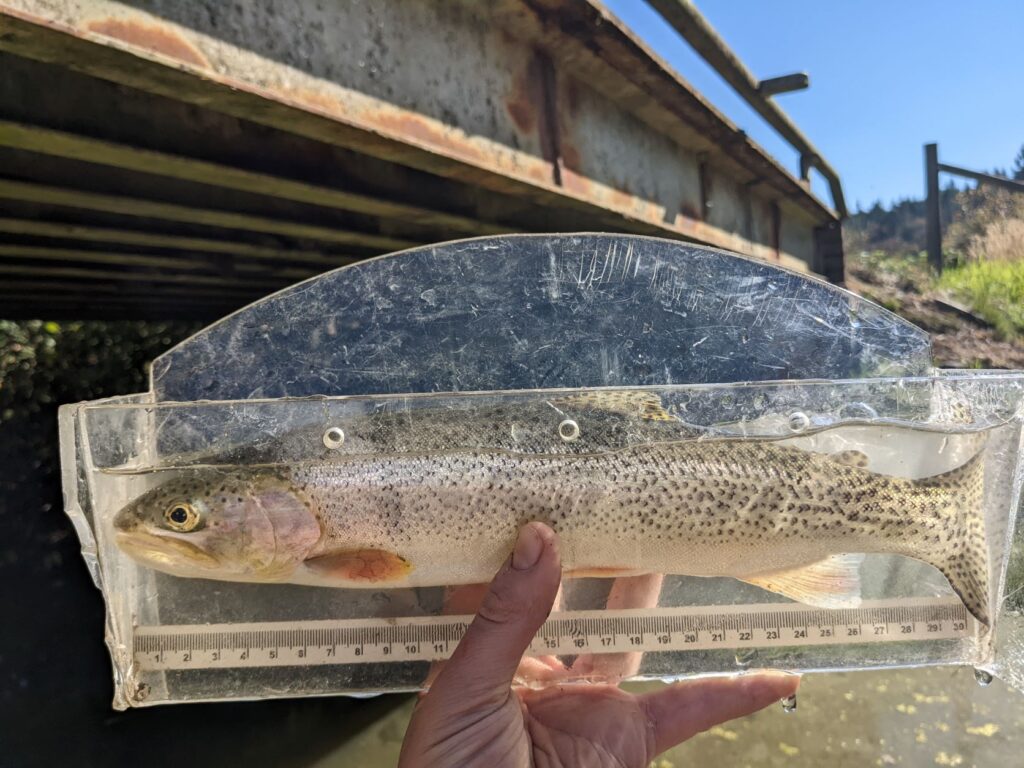Urban cutthroat trout
Coastal cutthroat trout could be considered the aquatic equivalent of the “canary in the coal mine” when it comes to small-stream health. Like other salmonids (trout and salmon), these fish have specific habitat requirements such as clean, cool, and well-oxygenated water. However, they spend more time, if not their whole lives in freshwater. Cutthroat are also found in much smaller streams than some other salmon and trout; these streams are often not recognized, mapped, or protected as important fish habitat. Cutthroat populations are also much smaller than those of other salmonids – sometimes only a handful of adults populate a small stream, even for populations considered healthy.
Cutthroat trout have never attracted the attention that other Pacific salmon have over the decades. They don’t support any commercial fisheries; they are smaller-bodied and fewer in number. However, they have significant cultural and ecosystem value. And as many anglers know, they provide excellent stream, lake, and estuarine (marine) recreational fishing in many areas on the coast. Unfortunately, the lower profile of this species makes it vulnerable to ongoing, cumulative human impacts on the habitat.
Cutthroat of the Saanich Peninsula
Southern Vancouver Island’s Saanich Peninsula is home to many small streams that once did (and often still do) support wild cutthroat populations. Depending on the stream, different “ecotypes” of cutthroat might be present, including searun (anadromous) fish that spend time in the ocean feeding, and resident fish that spend their lives in fresh water. Searun fish tend to be larger and often the target of fly fishers, while resident fish may range in size but are generally smaller (though not always the case in larger lakes on the Island and elsewhere where resident fish grow to impressive sizes).
Most streams on the peninsula empty into the ocean, but some have natural or man-made barriers (e.g., waterfalls or culverts) that prevent fish from migrating upstream. Cutthroat have been documented above these barriers as residents in some streams. In other cases, cut-off access reduces habitat options, and they are either trapped upstream or can no longer move upstream to spawn.
Local restoration activities
It may come as a surprise for some to learn that conservation efforts have been underway in streams on the Saanich Peninsula for over half a century. Now, several stewardship groups in and around Greater Victoria are taking steps to improve the awareness and protection of wild cutthroat trout and their habitats on the peninsula. The Freshwater Fisheries Society of BC is proud to have funded recent stewardship efforts targeting cutthroat streams. Since 2019, we have maintained the Native Trout Stewardship Initiative (NTSI). Stewardship groups can use these funds to support on-the-ground restoration activities, and as leverage to acquire funds from other sources to undertake larger-scale projects.
Streams involved
Portage Inlet – Colquitz and Craigflower creeks
In 2019, a consortium of groups – including the Victoria Golden Rods and Reels, Coastal Collaborative Sciences (CSS), Peninsula Streams and Shorelines (PSS), and Esquimalt Anglers – came together to establish the Portage Inlet Cutthroat Initiative (PICI), supported by the Native TSI. This initiative aims to create a long-term strategy for cutthroat populations in the inlet. Portage Inlet searun cutthroat trout were once trophy-sized fish. While still caught by avid catch-and-release fly fishers in the Gorge Waterway and Victoria harbour, the fish are now much smaller.
Activities to date include assessment and restoration activities in the Colquitz and Craigflower creeks, and funding from various sources has increased significantly. These two creeks have been heavily impacted over time by urban, agricultural, and industrial development in the Greater Victoria region. Incredibly, both cutthroat and coho still persist in these watersheds. Significant progress has been made in these streams, but work is ongoing to continue cleaning them up, to assess populations, and monitor water quality. It should be noted that all these efforts also benefit other native species in the system, like coho.
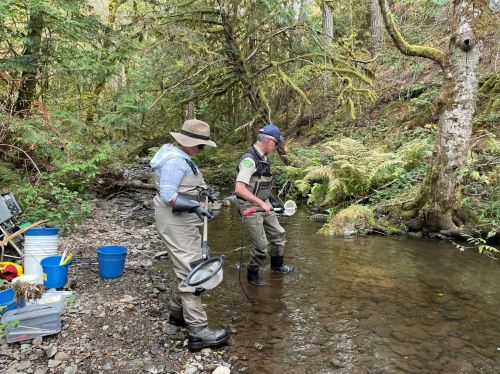
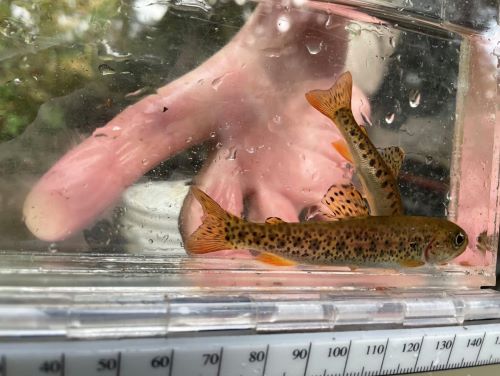
Peninsula Streams and Shorelines (PSS) has been heavily involved in local stream restoration for over 20 years. This grassroots group is now a key stewardship leader in the region, taking on increasingly large projects that benefit cutthroat, coho, and other fishes, as well as stream and wetland health in general. Often this is in collaboration with other non-governmental organizations like CSS, and local stewardship groups that they help create.
Over the past three years, PSS has collaborated with the PICI in efforts to recover highly degraded sections of Colquitz Creek, targeting the “loved-to-death” Copley Park in partnership with the District of Saanich. Specifically, PSS addressed several eroded sections of stream bank and stream beds; fenced off sections of the stream from foot and dog traffic; created riffle areas critical for juvenile and spawning cutthroat and coho; and replanted areas with native vegetation. Already, fish have been observed using these restored sections. PSS has now expanded its efforts to two more cutthroat streams on the peninsula, including Hagan-Graham and Tetayut creeks.
Hagan-Graham Creek
Hagan-Graham, one of the largest watersheds on the peninsula, empties into Patricia Bay. This stream system has suffered a multitude of impacts from industry and agriculture, including pollution and contamination, loss of wetlands, stream-straightening to create ditches, and land clearing. PSS – in partnership with the Tsartlip First Nation, the District of Central Saanich, and other groups – is now in the process of restoring key sections of the lower watershed, and NTSI funds have contributed to these efforts. Of interest, since the system has a 10-metre-high waterfall where it empties into the ocean, the only salmonids in the system are resident cutthroat.
Tetayut (Sandhill) Creek
Tetayut (Sandhill) Creek is one of the few key producers of searun cutthroat trout on southern Vancouver Island – a fact many of the local fly fishers are well aware of. Provincial fisheries have shown that this little stream can produce more juvenile cutthroat per square metre than almost any other stream assessed in B.C.
The creek has benefitted in the past from restoration efforts via the Haig-Brown Fly Fishing Association in partnership with provincial fisheries, but it still suffers some challenges. Historic restoration work included the first-ever-installed groundwater pumping station designed to offset water diversions in the summer and improve freshwater survival of juvenile cutthroat trout.
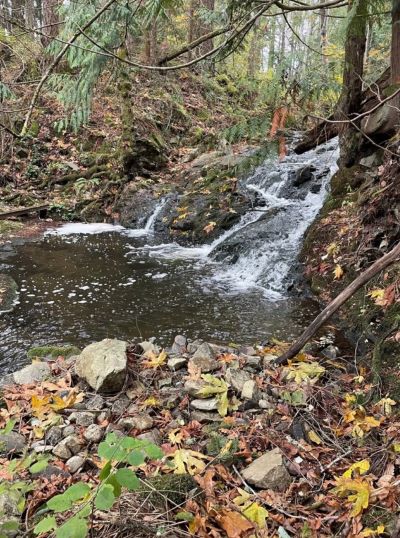
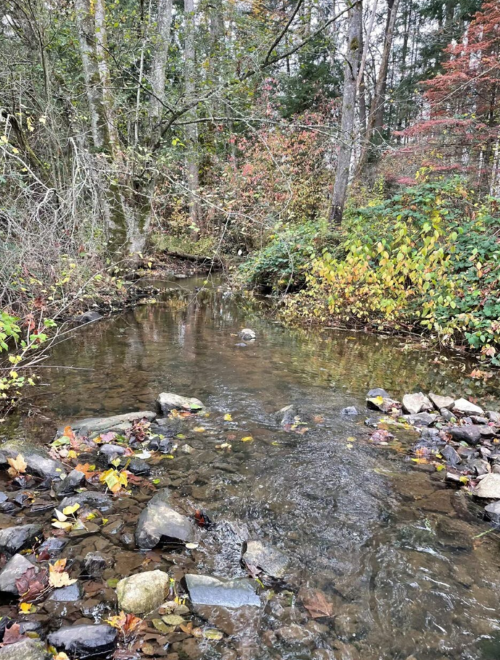
Tetayut Creek flows under the Patricia Bay Highway (Hwy 17) before emptying into Bazan Bay on the east side of the peninsula. Intact habitat for cutthroat can be found on the Heritage Acres property downstream of the highway. In 2018, PSS – in a partnership with the Ministry of Transportation and Infrastructure and other groups – restored fish passage through a highway culvert (whose outlet had become perched high and dry due to scouring during high stream flows), reconnecting cutthroat to two more kilometres of habitat upstream. Given Tetayut Creek’s provincial value as a cutthroat stream, PSS hopes to continue monitoring and assessment here.
Additional peninsula streams
PSS has also been involved in restoring a cutthroat presence to several other peninsula streams including: Chalet Creek, Kelset (Reay) Creek with the Sidney Anglers Association and Victoria Airport Authority, and Ten Ten Creek with the Tseycum First Nations and VAA. Forty years ago, all of these streams had lost their cutthroat populations.
It has been exciting to see these initiatives get off the ground, adding to earlier efforts. Even more so, it is exciting to see cutthroat using restored areas. Hopefully these projects continue to gain momentum, elevating the regional profile of cutthroat trout – from both cultural and environmental perspectives. Ongoing collaboration among all levels of government and stewardship groups is critical to building on these achievements.
Important to note: Angling regulations
Angling regulations for wild cutthroat trout on Vancouver Island streams are restricted to catch and release only. At present, some streams – like Colquitz and Craigflower – are closed to all fishing. Please refer to the current synopsis to confirm any stream-specific regulations, including closures and gear restrictions, and updated regulation changes.
Want more information?
The Freshwater Fisheries Society of BC is continuing the support of these local stewardship efforts via the NTSI program. We expect to fund several more excellent watershed-based projects in the upcoming year through this initiative. If you are interested in learning more above these projects or the NTSI program, please contact us.
Websites for the various stewardship groups involved in these projects can be found here:
- Esquimalt Anglers
- Colquitz Coalition
- Haig-Brown Fly Fishing Association
- Peninsula Streams and Shorelines
- Victoria Golden Rods and Reels
- Coastal Collaborative Sciences
Author: Sue Pollard, Freshwater Fisheries Society of BC
